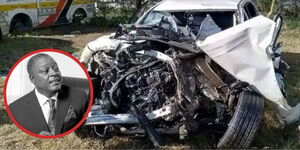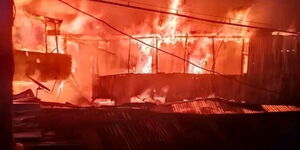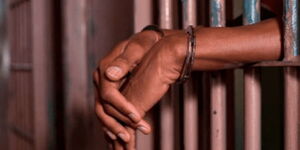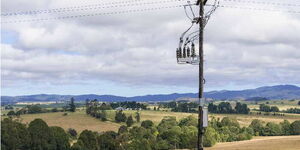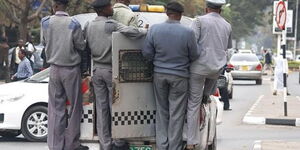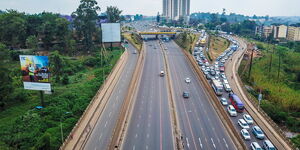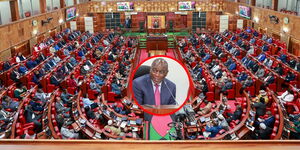While cremation is still considered a taboo in some parts of Kenya, other families are gradually accepting it as an alternative to burial.
There is still a wide variety of cultural, religious, economic and regional factors that influence the decision.Deciding which is right for you or your loved one depends on many factors.
For instance, the alarmingly increasing cost of burial space and the long and costly procedure involved in the burial option has seen some people opting for cremation.
In the end, however, only you and your family can decide which is right for your circumstances.
This article will delve into the cremation process and answer some of the most frequently asked questions about cremation in Kenya.
What is cremation?
Cremation involves reducing of the body to its basic elements through a process that exposes it to open flames, intense heat and evaporation. This is done in a specially designed furnace called a cremation chamber or retort.
Many crematories require a container for the body such as a casket appropriate for cremation or a rigid cardboard container.
The cremation process: Step-by-Step
1. Once the booking is made, the attendants make sure that the crematorium is cleaned.
2. If it’s going to be at the electric kiln, officers ensure there is sufficient diesel to power it. And if it’s firewood, they stock enough for the job.
3. When a hearse arrives, there is a short session for prayers and then the body is transferred onto a trolley and then wheeled to the cremation chamber.
4. Families can choose to have their relatives cremated at an open kiln as they watch or at a closed one.
5. The family can also select one member to light the fire.
6. A body requires about 40 litres of diesel to burn fully and the temperature is usually about 1,000 to 2,000 degrees Celsius.
7. Cremation takes one-and a-half hours and involves the burning of the body inside the coffin, in line with Health ministry regulations
8. The family can wait for the ashes the same day and collect them in urns or go they can go back for them the following day.
9. If not collected within a certain time frame, the ashes are dispersed in the crematorium grounds.
The ashes weigh in between a half or quarter a kilo.
Cremation costs in Kenya
According to reports, Kenya has 18 cremation centres . The most common crematoriums in Nairobi are the Langata crematorium, Hindu crematorium and the Kariokor crematorium.
The costs range from as low as Ksh20, 000 to as high as Ksh100, 000. The differences in cremation prices depend on where your loved one is being cremated and the materials used in the exercise.
Cremation at Lang'ata costs reportedly costs Ksh16,800 for an adult and Ksh12,000 for a child.
Hindu and Kariokor crematorium reportedly charges a flat rate of Ksh10,000 for a member and Ksh22,500 for a non-Hindu.
List of prominent people in Kenya who were cremated
On Tuesday, July 2nd, 2019, former Safaricom Chief Executive Officer (CEO) Bob Collymore's body was cremated in a private function at the crematorium in Kariokor, where only family and close friends were allowed to attend.
The Safaricom CEO died on Monday morning, July 1, at the age of 61 at his home in Nairobi after a long battle with cancer.
Collymore joined a growing list of prominent persons in Kenya who opted for cremation over the traditional burial.
Here are some of the popular Kenyans who were cremated.
1. Former politician and the multiparty founder Kenneth Matiba. (April 2018)
2. Africa’s Classic Professional golf champion Peter Njiru interred at Kariokor. (2015)
3. Former sports administrator Joshua Okuthe.
His empty coffin was later buried in a mock funeral in Tamu, Muhoroni.
4. Nobel Prize winner Wangari Maathai. (2011)
Her ashes were later buried at the Wangari Maathai Institute for Peace and Environmental studies.
5. Former minister Peter Okondo was also cremated.
There was a wrangle over his final burial rites after some family members disapproved cremation.
On the burial date, relatives arrived to collect the body at the morgue only to find his wife had cremated it.
6. Former Anglican archbishop Manasses Kuria and his wife Mary Nyambura Kuria.
Nyambura was cremated at the Lang'ata crematorium two days after her death at the Nairobi Hospital. Her cremation came as a shock to the members of the ACK church.
7. John Macharia
John Macharia, the son of Kenyan media mogul SK Macharia passed away in 2018 at the Karen Hospital where he had been rushed to after a freak accident along the Southern bypass.
8. Jeremiah Kiereini
Jeremiah Kiereini the Kenyan billionaire joined list of Kenyans whose family opted for cremation after they died.
9. Githae Kiereini
The son to late Jeremiah Kiereini was also cremated in 2017 after he was found dead in his car at his home in Karen.
History of cremation
Burning a corpse as a final rite of passage has been in practice since prehistoric times. There is evidence that people cremated bodies in China as early as 8000 B.C.
Cremation was commonly adopted in some parts of Greece but never became widespread, disappearing by 480 B.C.
In Sweden, the majority of funerals were cremations throughout the Iron Age and Viking Age but stopped once Christianity was introduced (A.D. 1050).
In the western Roman empire, cremation was the standard until the first century A.D., often associated with military honors.
With the spread of Christianity, cremation was frowned upon and disappeared for the most part in Europe by the fifth century A.D., except in unusual cases such as epidemics or war.
During the French Revolution, groups such as the Freemasons, revolutionaries and anarchists promoted cremation as a way of reducing the church's role in the funeral process.
Partly because of this association, the Roman Catholic Church opposed the use of cremation until the 20th century.
In Asia, cremation became popular in areas of Buddhist influence under certain dynasties in China and Korea until about A.D. 1300.
The advent of Neo-Confucianism in the 14th century brought burials back to the forefront in parts of Asia.
Modern cremation began in the late 1800s with the invention of a practical cremation chamber by Professor Brunetti, who presented it at the 1873 Vienna Exposition.
Championed by Queen Victoria's surgeon, Sir Henry Thompson, and driven by public concern for hygiene and health and clerical desires to reform burial practices, crematories slowly began opening in Europe and abroad.
Today, cremation is practiced in at least 31 countries around the world, with rates ranging from less than 2 percent in Ghana to more than three-quarters of the deaths in Switzerland
Religious views on cremation
Hinduism is unique among the world's major religions in mandating cremation, called antim-sanskar ("last rite") or antiesthi ("last sacrifice"), as one of the 16 life rituals.
Cremation is believed not only to dispose of the body in this life but also to usher the soul into the next world or its rebirth into the next life.
Followers of Jainism and Sikhism also strongly prefer cremation, although the doctrines do not strictly require it.
Open-air cremations are practiced regularly in India. In the holy city of Varanasi, bodies are burned atop wood-fueled pyres on the banks of the Ganges River.
Varanasi is also home to an electric crematorium that opened in 1989 but has since faced budgetary issues and power shortages.
Christianity, Judaism, and Islam all have traditions that frown upon cremation, if not outright prohibit it.
Islam instructs its followers to bury their dead as quickly as possible, preferably within the day of the death. (Abhorrence for any practice seen as desecrating a Muslim body also means that there is a shortage of cadavers for medical research in Muslim countries.)
Orthodox and Conservative Jews adamantly oppose cremation on grounds of biblical and Talmudic rulings.
Many Liberal and Reform Jews support cremation as an option. However, the history of Nazi cremation of Jews during the Holocaust also influences the opinion of both secular and religious Jews against cremation.
Eastern Orthodox Church prohibits cremation since it as a departure from the belief in the resurrection. Mormons, or
The Church of Jesus Christ of Latter-day Saints (LDS), strongly support burial over cremation, although the church allows cremation in cultures where it's customary.
The importance and sacrament of the body, as well as the fact that groups that opposed the church advocated cremation, led to the Roman Catholic Church's long-time opposition to cremation, although it wasn't technically against church dogma.
In the 1960s, canon law was relaxed and the church reiterated that cremation was allowed without penalty. Requiem Mass can be held with a body that would be cremated or, upon permission of the local bishop, with the cremated remains.
Protestant denominations have historically been more open to the idea of cremation and even advocated for burial reforms at the turn of the century.

